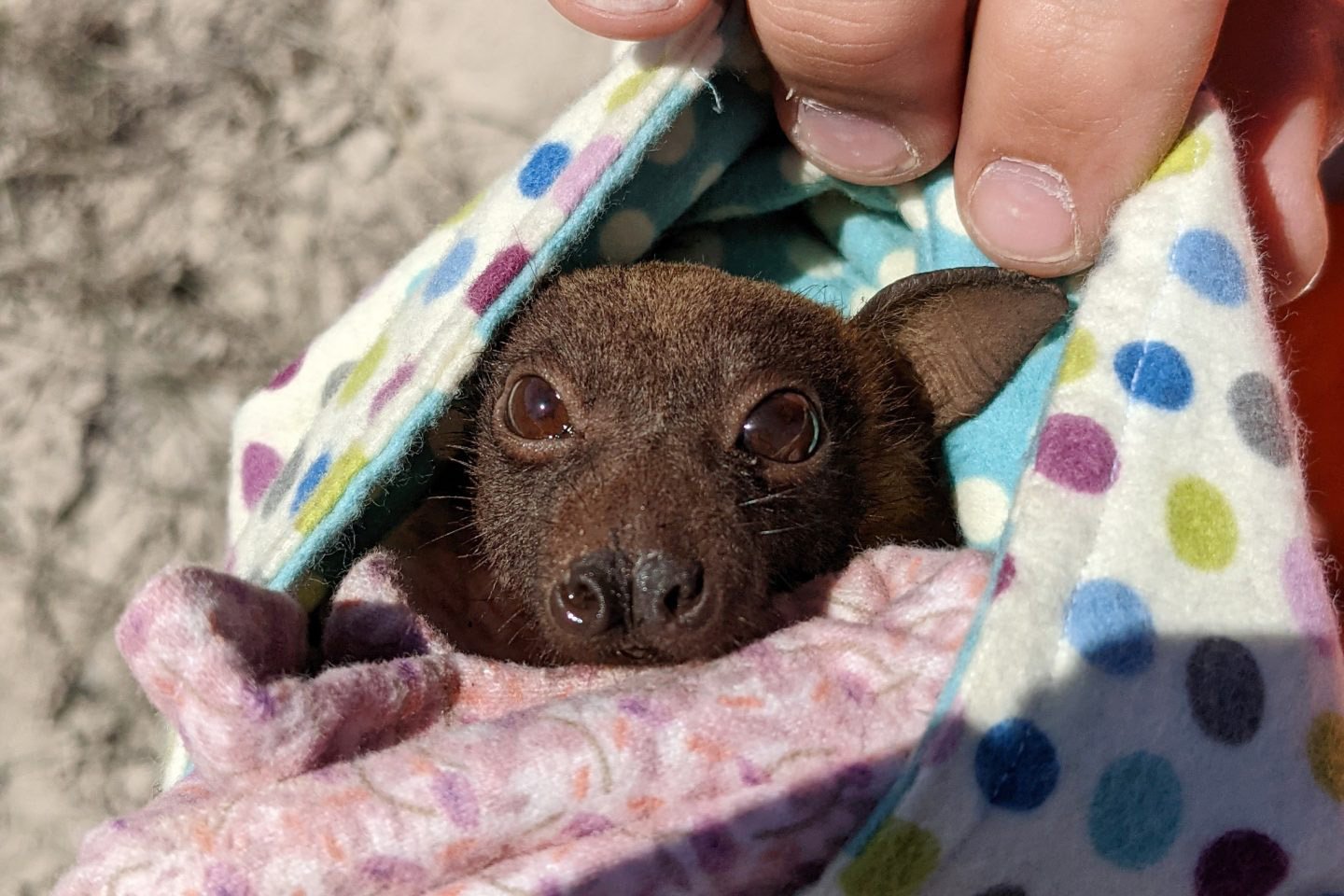Recently a Little Red Flying Fox was rescued from a barb wire fence by one of our extraordinary ecologists. In Australia barb wire fencing is very popular to keep in large stock and it is estimated that 10 million kilometres are in existence. Unfortunately, most animals that become entangled die and more than 70 Australian species have been identified as regular or occasional victims of this type of fencing. The animals that are of the highest risk are nocturnal, such as bats, gliders, and owls who will usually get caught up on the top one or two strands. A higher probability of entanglements can also occur when fencing is newly constructed, near waterways, dams, feed trees, windy weather conditions, or when the animals are very young or old.
The good news is there are ways we can reduce the risks of wildlife entanglements by modifying the current barb wire fencing or using ‘wildlife friendly’ alternatives. An important concept to consider is fencing will need to be designed to suit local wildlife species and conditions, as the size, shape and movement of wildlife are so diverse in each area.
Fencing is an integral part of land management especially when large stock is involved. As wildlife usually becomes entangled in the top one or two strands you can reduce this by covering the top strand with polypipe in high-risk areas or replacing the top strand of barbed wire with plain or white plastic-coated wire. Electric fencing is another alternative but will require regular upkeep and maintenance.
Increasing visibility is another option to reducing wildlife entanglements as many animals find it difficult to see the barb wire. Ways that you can help is stringing electrical fence tape above the top strand of barb wire, attaching reflective material such as metal tags, or used CDs along the top wire. To assist with the movement of ground-living wildlife such as kangaroos, wallabies and bettongs leave a 50cm gap between the ground and lowest fence strand, and by planting native trees and shrubs along both sides of fence lines, you can assist the movement of wildlife that live in trees, such as koalas and possums.
If you don’t run stock, consider removing the barb wire fencing altogether. To make your property more private you could plant a combination of native trees, shrubs and ground cover to screen your property while providing habitat areas and allowing wildlife movement in a safe manner.
References: https://www.lfwseq.org.au

